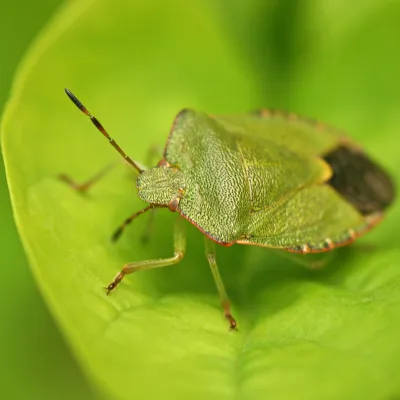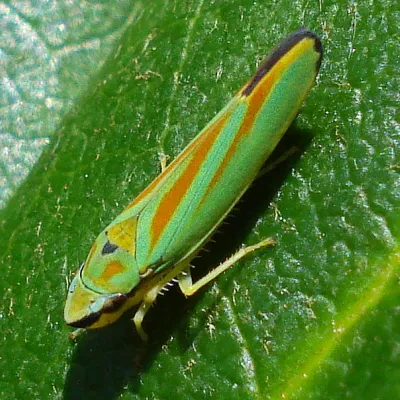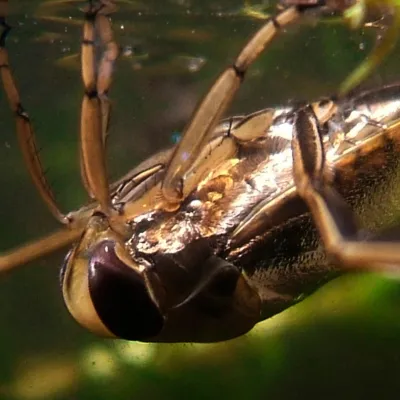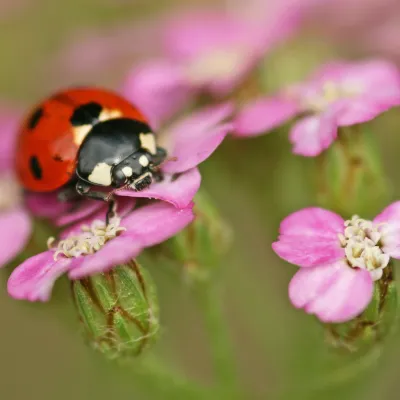What is a bug?
A true bug typically has...
Specialised piercing mouthparts (for their liquid diet!)
Soft, thin, membranous wings with noticeable veins and forewings thickened at the base
Antennas composed of 4-5 segments.
Unlike beetles, bugs don’t go through a complete metamorphosis, instead hatching from their eggs as nymphs (juveniles). They then moult their exoskeleton several times as they grow.
Most bugs are plant-feeders, but some are parasitic and others prey on other insects. Beetles, on the other hand, eat a wide range of plant and animal materials.
Examples of bugs
The following examples might help to illustrate what this all looks like in insect form:
Shield bug
Leafhopper
What is a beetle?
A beetle has...
Chewing mouthparts
Hard, leathery, and protective forewings called elytra, and membranous hindwings
Antennas composed of around 11 segments.
The beetle’s forewings cover the membranous hindwings at rest – you might have noticed this when a ladybird flies, for example!
As opposed to the incomplete metamorphosis of bugs, beetles go through the complete process: from egg to larva (or grub) to pupa to adult. Whereas a bug hatches as a juvenile version of its adult self, a beetle starts off as a larva, which then breaks down during pupation to make way for its adult structures.
Examples of beetles
Beetles are somewhat easier to identify thanks in large part to their hard wing cases. You might know the following, for example:
Beetles and bugs matter: why they’re important
Beetle or bug, hemiptera or coleoptera – they're both hugely important to the natural balance of our planet. In fact, insects are the largest, most diverse group in the animal kingdom, making up roughly 75% of all described animal species.
They play crucial roles in our ecosystems, from pollinating crops and flowers to breaking down matter and serving as a food source for many animals. Without them, life as we know it would simply collapse.
It’s alarming, then, to know that bug and beetle populations are declining. Because of habitat loss, pesticide use, climate change, and more, the abundance of insects has fallen dramatically over the last century.
Our 2023 Bugs Matter survey found that the abundance of flying insects sampled on vehicle number plates has fallen by a staggering 78% in the UK between 2004 and 2023. The time to help these crucial critters is now.
So be sure to learn more about why ‘Bugs Matter’ and keep an eye out for our 2025 citizen science survey, starting in May 1st. Anyone that drives can take part!

Take part in Bugs Matter 2025
Be a citizen science hero in a few easy steps. Survey season starts May 1st!







